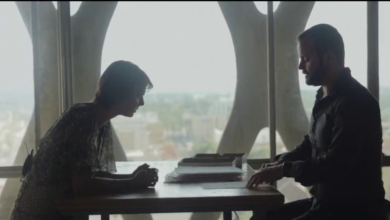
Just over thirty years ago, in late 1993, almost everyone I knew was downloading the same software from a website hosted at the University of Illinois at Urbana-Champagne: Mosaic. At that point, I was already using Cello; developed at Cornell University Law School, it was the first browser written for Microsoft Windows, because that was what law students needed. I stuck with Cello until its development stopped and it fell behind as web development raced forward.
All of us who were then using the Internet thought we were visionaries. Everyone else thought we were weird losers lacking lives. How could anyone be real friends with someone they’d never met, to whom they typed?
It took much more than just Mosaic, the pioneering Web Browser, to change all that, but Mosaic was an important step. All of a sudden, people who’d dismissed the Web as slow, tedious, and frustrating to use could surf from site to site like old-timers.
Still, many other technologies had to be in place. These included:
– High Performance Computing Act 1991 (aka “The Gore bill”);
– Graphical interfaces;
– Internet protocols (TCP/IP);
– The domain name system (DNS);
– The World Wide Web.
– Consumer access to the Internet
All but the last were developed during the 1980s. TCP/IP was formally adopted as a standard by the Department of Defense in 1982, and migrated the Internet’s precursor, the ARPANET. Microsoft launched the first version of Windows in 1985 and launched the third, the one that found widespread adoption, in 1990. The DNS was adopted in 1985. Finally, Tim Berners-Lee proposed his design of the Web to CERN in 1989, and released it royalty-free to the world in 1993. Gore’s bill provided the funding that paid for Marc Andreessen and Eric Bina to build Mosaic. Consumer access in Britain had kist begun.
TCP/IP won out over a raft of proprietary networking systems and the slow-to-arrive European Open Systems Interconnection seven-layer model, which started in the 1970s as an attempt to get the industry to agree on a common standard. TCP/IP was royalty-free, worked with all types of computers, and was ready to go.
The importance of the DNS is often underestimated; it gave computers connected to the Internet human-readable and human-memorable names instead of 12-digit numbers. Even today a browser can load a page that’s specified via an IP number, but the difficulty of remembering more than a few of these means that without the DNS Mosaic would not have made a dent.
The nascent web also had competitors: Gopher, WAIS, Archie. The web won partly because it was more usable and partly because Berners-Lee and CERN made it available royalty-free. The University of Minnesota, where Gopher was invented, had said it would charge a licence fee. WAIS, for “Wide Area Information Server”, was a commercial collaboration among the supercomputer company Thinking Machines, Apple, Dow-Jones, and KPMG. Archie and successors Veronica and Jughead indexed FTP (for “File Transfer Protocol”) servers; these were subsumed into the web.
The first browser I ever used was Lynx. It was text-based, so navigating to a link meant painfully tabbing through every option until you got to the one you wanted. Mosaic was not the first graphical web browser – Berners-Lee’s first implementation was on the graphical NeXT computer – but it eventually ran on five operating systems – Mac, Windows, Amiga, OS/2, and UNIX.
Eventually, of course, Mosaic was superseded by Netscape, set up as a commercial venture by Andreessen and Silicon Graphics founder Jim Clark. Netscape’s wildly successful 1995 IPO set off the dot-com boom and the original “browser wars”, as Microsoft released Internet Explorer to try to extend its PC dominance to the growing Internet. In 1998, Netscape announced its browser and source code would be free. Mozilla was set up to take advantage, and rewrote the code for the first versions of Firefox. AOL acquired what was left of Netscape in 1999. Andreessen, whom Mosaic made a star, went on to co-found the venture capital firm Andreessen Horowitz, which was an early investor in Skype, Airbnb, Twitter, Zynga, Groupon, Foursquare, and Stripe, among many others. Bina faded from view, despite his 2014 induction into the Internet Hall of Fame. Andreessen has credited him with the hard coding work; Bina has deferred to Andreessen’s drive to succeed and, above all, Berners-Lee.
I tend to agree with Bina. The popularity of the Internet and the web would have happened with or without Mosaic because another browser would have taken its place. In this world, however, Mosaic was the one that helped millions take their first steps onto the Internet. So happy birthday.




